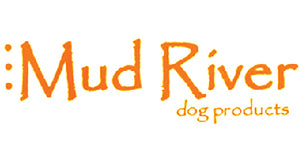Bite Prevention and Safety: 5 Tips to Protect Your Dog
Learn the Lingo
Pets communicate primarily through body language, but also through scent and vocalization. As a responsible pet owner, learn to interpret general pet language including communication through posture, eyes, ears, tail, and mouth. Specifically learn to recognize or distinguish signs of fear or stress in your pet from signs that your pet is content and playful. This will help you to promptly remove your pet from a stressful situation before it escalates. Normal play behaviors may mimic aggression, so interpretation and context is key.
Proper Introductions
Allow pets to meet in a neutral territory. Walking side by side is recommended (i.e. not introducing face to face) to allow pets to smell each other without direct confrontation. In new environments (like a dog park) walk around with your pet to introduce them safely to other pets. If there are pets that appear aggressive, it may be best to find a different park or go at a different time. If your pet struggles with aggression or anxiety towards other people or dogs, it is not recommended to visit community interaction environments until the underlying issue has been thoroughly corrected. Don't let your pet be a bully!
Breaking Up a Tussle
Occasionally dogs become engaged in a fight that may include biting, scratching, and loud vocalization - these situations can be scary and may be life threatening! Separate quarreling dogs quickly and safely. DO NOT put yourself in the middle of pets that are fighting, as you will likely be injured. I recommend a startle or redirection approach to diffuse the situation: make a loud noise, throw a bucket of water on them or spray a water house between them, put a big stick or lawn chair in between the animals, etc. Once dogs are disengaged they will still be feeling the effects of adrenaline. Carefully redirect your pet in the opposite direction while protecting yourself from misdirected biting behaviors.
Injury Care
Pets should be examined ASAP following any injuries. Teeth can penetrate deep into the body causing severe trauma that may not be visible externally. Any wounds to the head, neck, chest, or abdomen should been evaluated by a veterinarian immediately. Wounds to the appendages (legs, ears, tail) can be triaged by cleaning and appropriate bandage care. Pets without life threatening injuries should still be examined within the first 6-12 hours following an injury for care. Always muzzle a pet before moving them after an injury and before cleaning a wound to prevent injury caused by a pet in pain.
Avoid Triggers
Think through potential scenarios ahead of time to avoid uncomfortable situations for your pet. Dogs who become aggressive when food is involved should be fed separately from people or pets. If a dog is anxious around loud noises, a wide open field may be a better fit than a inner city dog park for a game of fetch. If your pet has chronic pain, rough play should be avoided. Teach kids how to appropriately play with pets and to respect a pet's boundaries and personal space. Wild animals and livestock can also be dangerous. Do not allow your pet to stray from your property or to interact with wild animals without supervision. Make sure your pet is appropriately trained to recall on command before attending any multi-pet functions. Training refresher courses help keep your pet safe when his life is on the line.
Please follow these helpful tips to help keep your pets as safe as possible while out enjoying the great outdoors!
### Amanda Burow, D.V.M. (Dr. B), is a graduate of Iowa State University's College of Veterinary Medicine. Dr. Burow's patient list includes hunting dogs of all varieties, as well as several field trial dogs and full time sporting guide dogs. In addition to practicing general veterinary medicine, she has special interest in the areas of preventive care, emergency medicine, and dermatology. In her spare time, she enjoys being outdoors and on the lake, staying active, reading, and spending time with family and friends. Mud River is proud to share these tips from Dr. B with our customers. Keep in mind it is best to work with your local veterinarian to determine the needs for your animals.







